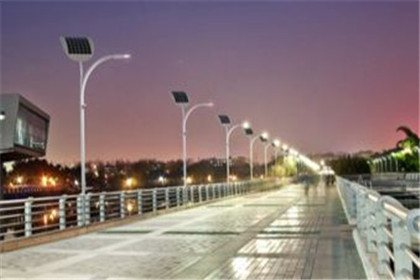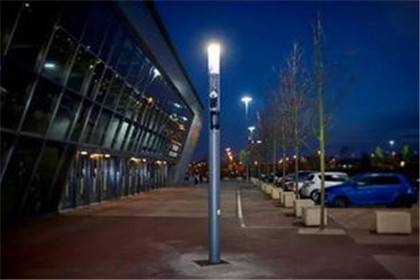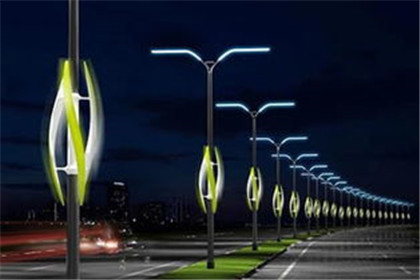Smart City: Internet of Things Distribution and Power Problem Solution
With the widespread use of next-generation information technologies such as the Internet of Things (IoT) and cloud computing, as well as the smart city energy conservation and environmental sustainability trends, urban street lights began to join sensors, with networking, collection, analysis of surrounding environment, traffic information, and transformation into intelligence. Street light. According to the research group Northeast Group, the global street lamp market will be about 315 million baht in 2016, and will grow 359 million street lamps by 2026. The LED street lamp and smart street lamp market will reach US$69.5 billion. According to the Philip market research, only 1% of the global streetlight installation systems currently have networking capabilities, but the average annual compound growth rate is 16%.
Solve the problem of Internet of Things distribution and power supply

Smart cities make full use of technologies such as sensing, mobile network and cloud computing to integrate key information of cities and analyze them to solve the needs of traffic environment, public safety, industrial and commercial services, etc. Therefore, an IoT terminal device that collects and processes information is needed. Street lights have two advantages, namely location advantage and power supply system, which can solve the two biggest problems of IoT equipment: layout and power supply.
However, intelligent street lamps are widely used in outdoor lighting, and have a wide range and a large number. If short-distance transmission such as ZigBee is adopted, the limited coverage is small, and a large number of gateways and equipment maintenance costs need to be deployed, and the traditional 2G/3G/4G network is used. Although the Internet of Things M2M transmission covers a wide range, it does not meet the requirements of low power consumption and low cost of IOT equipment. Therefore, low-power wide area network (LPWA) technology emerges as the times require. LPWA has three characteristics of long-distance communication, low-rate data transmission and low power consumption. It is suitable for IoT applications with long-distance transmission, small amount of communication data and battery power supply.
At present, LPWA has been applied to smart streetlights. Telessa has established a network of 130,000 smart street lights and outdoor wireless single-light control systems in Essex, England. Because PLANET transmits data in LPWA, and according to various The factors are flexible to adjust the lighting to save energy and electricity. In addition, Telenas also has sensors on the street lights to know the vehicle's access conditions. Drivers can use this service to know if there are parking spaces nearby, so that the street lights can reach convenient transportation, save energy, and even assist. The police handled the case and it is estimated that LPWA will gradually be applied to smart street lights.
Another example is Cisco's 2014 plan to discuss a 10-year, $15 million smart city infrastructure plan with Kansas City, Missouri, USA, and officially launch the first phase in 2016. Cisco installed 125 smart street lights in the city center, which can save up to 80% compared with traditional street lights. In the future, Kansas City can use smart city lights and other smart city infrastructure to increase revenue. For example, install smart sensors on the parking space to let smart street lights guide driving. In the vacancy, the sensor will automatically time the billing, and the driver can also pay online through the app.

For the city, the construction of intelligent street lamps has obvious advantages, including wide coverage, energy saving, remote monitoring of road conditions, detection of urban environment, and application in transportation and security. However, many cities store information in the cloud, and network security becomes a necessity. In addition, more and more sensors are installed on smart street lights, such as video surveillance, sound sensors, etc., which may make people's privacy concerns another problem, so manufacturers must pay attention to the privacy issues that may be involved in design time.
In addition, the construction of intelligent street lamps also needs to consider the source of funds and the structure of ownership, whether the infrastructure is outsourced and other factors, and can not add various sensors or additional functions to the street lamps, such as the street lights. Electric vehicle charging station, free wireless Internet hotspot, video surveillance, etc. Smart cities have different needs in different countries and different application scenarios, and the problems they face are different. When building smart street lamps, each city must evaluate cases in order to solve practical problems in the city and make the benefits of intelligent street lamps. Give the most effect.
Soft and hard integration development products turn to service
The life cycle of IoT devices is often very long. Once purchased and installed, they will be used for a long time, and it is not easy to replace them. By providing customized and innovative services to realize the value of IoT, more value-added functions and applications can be realized. For intelligent street lighting manufacturers, how to ensure the benefits of sharing hardware sales, but also in software and services, is one of the topics that must be considered.
For example, US-based GM has shifted from hardware product sales to service-oriented business model development. Intelligent street lamps not only earn equipment costs, but also grasp various data collected through street lamps, and local governments want to use data to develop urban solutions. To pay for general data processing services. In addition, GM provides new entrepreneurs with free use of streetlight-related data for 60 days, allowing them to develop smart city applications, such as the subsequent use of data to continue charging, thereby attracting parties to participate, rapidly expanding the user base and developing urban applications.

Therefore, the intelligent street lamp industry should consider the business model of developing products and services by means of soft and hard integration. It can form an ecosystem with government, academic research and startup companies, use street lamps to collect, analyze data and information feedback, and create various smart services to achieve win-win results. situation.
Pet Braided Sleeve,Braided Wire Sleeving,Pet Cable Sleeving,Pet Expandable Sleeving
Shenzhen Huiyunhai Tech.Co., Ltd. , https://www.cablesleevefactory.com